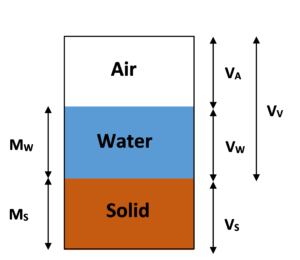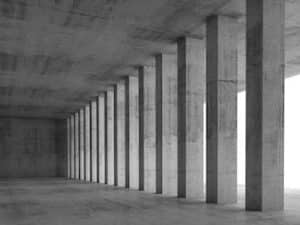
Classification Of Piles Based On Materials Used
Piles may be classified based on different criteria. One of such criteria is the materials of the pile. In this treatise, you will learn the classification of piles based on the material composition. They include:
- Timber Piles
- Concrete Piles
- Steel Piles
- Composite Piles
Timber Piles: These piles are made of woods. Circular seasoned woods can be used. The dimension of the pile may vary from 200mm to 400 mm. Such piles are driven into the ground by hammering. Their bottoms are normally attached with metallic shoes so they can be easily hammered into the ground. The length of these piles should not be greater than 20 times their lateral dimensions. When driving, they should always be driven down to a depth above the ground water table so as not to be easily damaged by the frequent alternating wet and dry conditions. Timber piles are cheap and can be rapidly driven into the soil. The caveat, however, is that they can be easily damaged during the driving process, and their load-bearing capacity is low.

Concrete Piles: Concrete piles, just like the name implies, are made of concrete, which is a mixture of cement, fine aggregate, and coarse aggregate. Concrete piles are usually reinforced with steel. They may be precast or cast in situ. Their dimensions range from 200mm to 500 mm, and they are of various shapes. The common shapes for this type of pile are square, circular, or octagonal. Their lengths can extend up to 20m. Concrete piles are provided with steel shoes at the lowest end just like timber piles. They have enormous load-bearing capacity and can withstand a considerable amount of stress. One of the advantages of concrete piles is their ability to withstand the biological and chemical actions of the soil considerably. One of their disadvantages is that they require more time to manufacture and are fairly bulky.

Cast in-situ piles are formed by boring holes into the ground. Casings are provided and concrete is poured into them. When concrete is poured without reinforcement, it is known as a pressure pile. Reinforcement caging may be provided and inserted into the bored holes. To increase the load-carrying capacity of the piles, the base may be increased or bulbs known as under reams are provided. Such piles are known as under ream piles. They may be provided at regular intervals of 2m – 4m, and capping beams are provided over them.
Video: Under Ream Pile Construction Process (Manual Method)
Steel Piles: Steel piles may be rolled steel sections fabricated in the form of a box or tubes. They are used as bearing piles since they have low frictional resistance because of the small surface available for friction and their low coefficient of friction. When tubes are utilized, the soil in the tubes is driven out by compressed air and then filled with concrete. Steel piles are very useful when building close to existing structures since they exhibit the least disturbance to existing soil.

Composite Piles: Composite piles are made from the combination of two or more construction materials. Sometimes, timber and concrete are combined, while at others, steel and concrete may be used. Due to the alternating wet and dry atmospheric conditions above the water table, it is not recommended to use timber in this location; hence, timber is used below the water table and cast-in-situ concrete is used above the water table.
The length of steel piles is sometimes shorter than the required length of pile. When this is the case, steel may be combined with concrete to give rise to a composite pile construction.

In summary, there are many conditions that guide the classification of piles. One of such is the material fabric of the piles. In this treatise, we have been able to explain the types of piles based on the materials they are made up of, which include timber, steel, concrete, and composite materials. Composite piles combine different materials, thereby harnessing both the disadvantages and advantages of the individual materials used. Steel piles may be hot-rolled sections or welded sections, while concrete piles may be cast in situ or precast.




